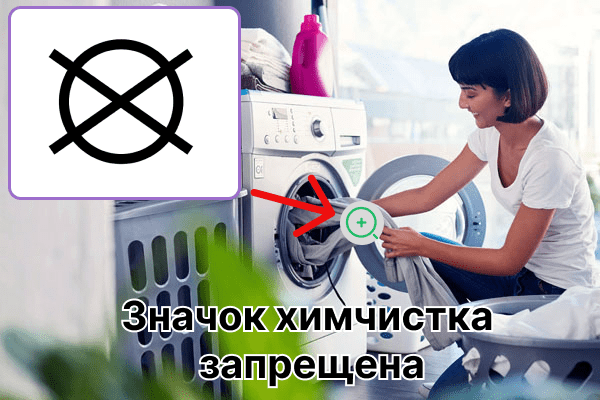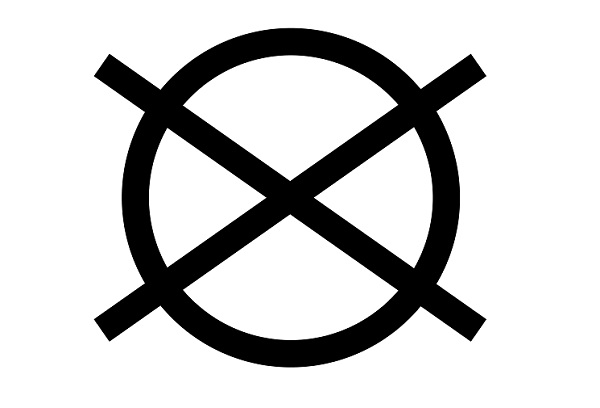What does the dry cleaning icon on clothes mean (circle on the tag): explanation of the main and additional symbols, care recommendations
All textile products are equipped with tags with symbols that determine the rules for caring for the item. Some designations, for example, iron or basin, do not raise any questions. But deciphering the symbol on labels in the form of a circle on a tag (a dry cleaning sign on clothes) is often accompanied by difficulties. The basic element can be supplemented with letters or lines indicating the conditions under which professional treatment should be carried out.

General information and recommendations
The type of symbols printed on clothing labels is determined by ISO international standards. In Russia there is an analogue - GOST ISO 3758-2014 for textile products. The materials from which the labels are made are highly durable and resistant to aggressive cleaning agents. Badges are painted or embroidered. Often recommendations are duplicated on a tear-off label.
The order of placement of symbols is also determined. The dry cleaning sign on clothes is always placed last. A label with recommendations is attached to the neckline or inserted into the side seam. This depends on the type of product and is regulated by GOST 10581-91, which establishes the rules for labeling, packaging and transportation of textile products.
When using clothes, tags made of rather hard materials can cause discomfort.Therefore, many consumers prefer to cut them off. In this case, it is recommended that you save or photograph the tag before placing it in the recycling bin. The information it contains will be useful in the future and will help preserve the original appearance of the item for a long time. The consequences of improper cleaning can lead to damage to the product, making it unusable.
If there is no tag, you need to follow the general rules for caring for this type of fabric. And resort to bleaching and dry cleaning only in extreme cases and with extreme caution.
What does the dry cleaning icon look like and what do the additional symbols mean?
Simply finding out what the circle on the tag means is not enough to properly care for the item. Additional characters must be decrypted if present. The presence of only an empty circle indicates that this product is recommended for dry cleaning only.
Letter meaning:
- W – wet cleaning;
- F – dry cleaning using hydrocarbons with a flash point of 38-60°C, boiling point – 150-210°C;
- P – dry cleaning, in which the use of tetrachlorethylene and substances approved for category “F” is allowed;
- A – dry cleaning with any type of chemicals. Currently, such markings are no longer used, and can only be found on old things.
Meaning of lines:
- two diagonal lines crossing out the circle - the product must not be treated with chemicals;
- one horizontal line under the icon - dry cleaning is allowed only in delicate mode with a number of restrictions;
- two horizontal lines under the main symbol - a particularly delicate mode is recommended with a significant limitation of humidity, temperature and mechanical stress;
- short diagonal line at the bottom left - shortened processing cycle;
- a short diagonal line at the bottom right - only cool water can be used;
- short diagonal line at the top left - you can clean in low humidity conditions;
- short diagonal line at the top right - it is prohibited to use steam at the final stage of processing.
If a sign allowing dry cleaning is not supplemented with lines, this means that it must be carried out as usual, in accordance with the conditions indicated by the letter.

What not to do

The most common consequences of improper dry cleaning include:
- pronounced, often uneven shrinkage of the material;
- loss of the original form of a thing;
- the appearance of stains on the fabric;
- thinning of the fabric, breaks in the weaving threads;
- loss of color when the product looks faded and worn.
Therefore, you should not spare money on paying for the services of specialists; in any case, it is cheaper than a product that needs dry cleaning. And unreasonable savings can lead to even greater costs when you have to purchase a new item to replace a damaged one.
What can you do

This method has a number of advantages compared to the usual one:
- Fabric shrinkage is excluded. With minimal exposure to moisture, the fabric fibers do not shrink during the drying process.
- The item retains its original shape. It is almost impossible to damage or deform the material during dry processing.
- Cleaning without water is allowed for all delicate materials. There is no need to worry about your cashmere or wool item; such washing will not damage the item.
- Most formulations intended for this type of treatment cope better with stains, including complex ones.
- When dry washing, you can leave the product in its original condition. There is no need to remove decorative elements, rip off buttons or shoulder pads, and then sew them on again.
Dry processing can be done using conventional laundry detergents (for example, apply soap suds and remove dirt by moistening a sponge in it). But it is better to purchase a special kit that includes all the necessary materials that will definitely not harm the product.
